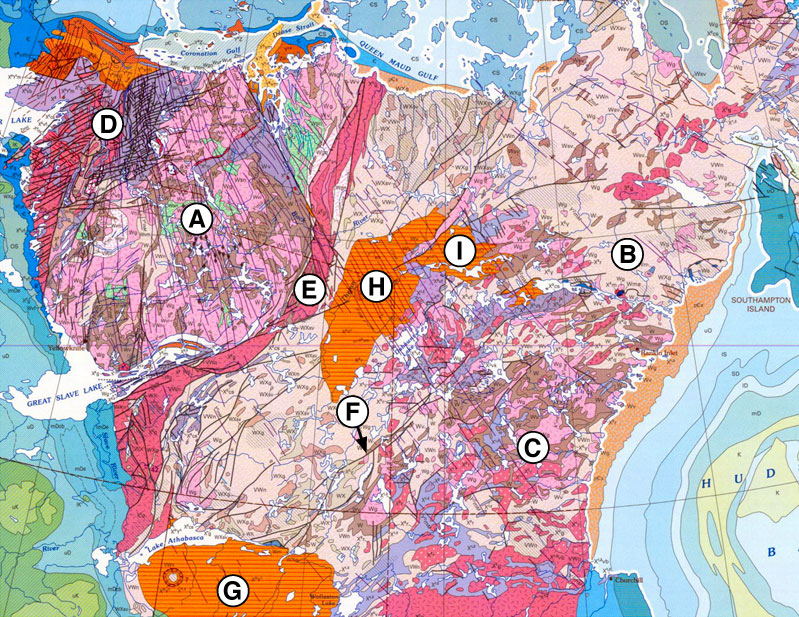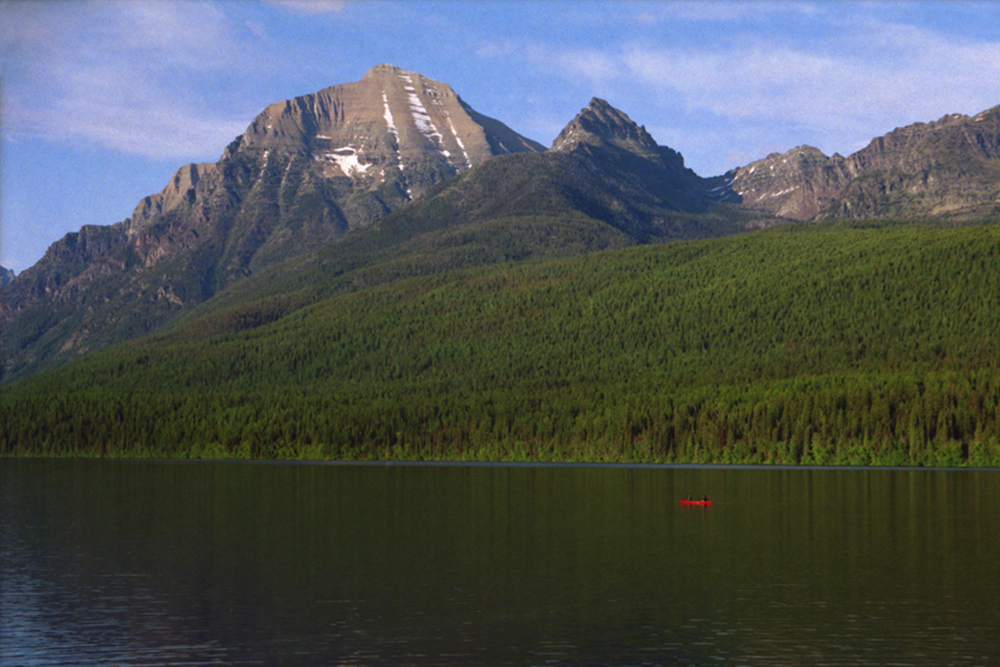|
Medicine Hat Ocean
The Medicine Hat Ocean is an inferred small ocean basin that closed in the Proterozoic as the Hearne craton and Wyoming craton collided. See also * List of ancient oceans * Geology of Wyoming * Geology of Montana The geology of Montana includes thick sequences of Paleozoic, Mesozoic and Cenozoic sedimentary rocks overlying ancient Archean and Proterozoic crystalline basement rock. Eastern Montana has considerable oil and gas resources, while the uplifted Ro ... References Historical oceans Oceanography Proterozoic North America Geology of North America {{Canada-geology-stub ... [...More Info...] [...Related Items...] OR: [Wikipedia] [Google] [Baidu] |
Proterozoic
The Proterozoic () is a geological eon spanning the time interval from 2500 to 538.8million years ago. It is the most recent part of the Precambrian "supereon". It is also the longest eon of the Earth's geologic time scale, and it is subdivided into three geologic eras (from oldest to youngest): the Paleoproterozoic, Mesoproterozoic, and Neoproterozoic. The Proterozoic covers the time from the appearance of oxygen in Earth's atmosphere to just before the proliferation of complex life (such as trilobites or corals) on the Earth. The name ''Proterozoic'' combines two forms of ultimately Greek origin: meaning 'former, earlier', and , 'of life'. The well-identified events of this eon were the transition to an oxygenated atmosphere during the Paleoproterozoic; the evolution of eukaryotes; several glaciations, which produced the hypothesized Snowball Earth during the Cryogenian Period in the late Neoproterozoic Era; and the Ediacaran Period (635 to 538.8 Ma) which is characterize ... [...More Info...] [...Related Items...] OR: [Wikipedia] [Google] [Baidu] |
Hearne Craton
The Hearne Craton is a craton in northern Canada which, together with the Rae Craton, forms the Western Churchill Province. Hearne is one of the six Archaean cratons of the Canadian Shield (the other being Slave, Rae, Wyoming, Superior, Nain) that are bound together by Palaeoproterozoic orogenic belts. Before being merged these six cratons formed independent microcontinents. Geological setting The Hearne Craton is separated from the Rae Craton by the -long Snowbird Tectonic Zone (STZ). During the Neoarchaean and Palaeoproterozoic the STZ played a major role when the Western Churchill Province was first assembled and then reworked. The STZ is a record of Neoarchaean plate tectonics similar in scale to modern orogenic belts. When Laurentia formed at 2.0–1.7 Ga Hearne and Rae formed a central strip to which the Slave, Superior, Sask, and Wyoming cratons were accreted. This strip is bounded by a series of orogens: the 1.92–1.69 Ga Trans-Hudson to the south ... [...More Info...] [...Related Items...] OR: [Wikipedia] [Google] [Baidu] |
Wyoming Craton
The Wyoming Craton is a craton in the west-central United States and western Canada – more specifically, in Montana, Wyoming, southern Alberta, southern Saskatchewan, and parts of northern Utah. Also called the Wyoming Province, it is the initial core of the continental crust of North America. The Wyoming Craton was sutured together with the Superior and Hearne- Rae cratons in the mountain-building episode that created the Trans-Hudson Suture Zone to form the core of North America (Laurentia). It was incorporated into southwest Laurentia approximately 1.86 billion years ago. Local preservation of 3.6–3.0 Ga gneisses and widespread isotopic evidence for crust of this age incorporated into younger plutons indicates that the Wyoming Craton originated as a 100,000 km2 middle Archean craton that was modified by late Archean volcanic magmatism and plate movements and Proterozoic extension and rifting. The Wyoming, Superior and Hearne-Ray cratons were once sections ... [...More Info...] [...Related Items...] OR: [Wikipedia] [Google] [Baidu] |
List Of Ancient Oceans
This is a list of former oceans that disappeared due to tectonic movements and other geographical and climatic changes. In alphabetic order: List * Bridge River Ocean, the ocean between the ancient Insular Islands (that is, Stikinia) and North America * Cache Creek Ocean, a Paleozoic ocean between the Wrangellia Superterrane and Yukon-Tanana Terrane * Iapetus Ocean, the Southern hemisphere ocean between Baltica and Avalonia * Kahiltna-Nutotzin Ocean, Mesozoic * Khanty Ocean, the Precambrian to Silurian ocean between Baltica and the Siberian continent * Medicine Hat Ocean * Mezcalera Ocean, the ocean between the Guerrero Terrane and Laurentia * Mirovia, the ocean that surrounded the Rodinia supercontinent * Mongol-Okhotsk Ocean, the early Mesozoic ocean between the North China and Siberia cratons * Oimyakon Ocean, the northernmost part of the Mesozoic Panthalassa Ocean * Paleo-Tethys Ocean, the ocean between Gondwana and the Hunic terranes * Pan-African Ocean, the ocean th ... [...More Info...] [...Related Items...] OR: [Wikipedia] [Google] [Baidu] |
Geology Of Wyoming
The geology of Wyoming includes some of the oldest Archean rocks in North America, overlain by thick marine and terrestrial sediments formed during the Paleozoic, Mesozoic and Cenozoic, including oil, gas and coal deposits. Throughout its geologic history, Wyoming has been uplifted several times during the formation of the Rocky Mountains, which produced complicated faulting that traps hydrocarbons. Geologic history, stratigraphy and tectonics The Precambrian crystalline basement rocks of Wyoming include schist and gneiss in the Wyoming Craton, which formed during the Archean beginning 3. 6 billion years ago. The Wyoming Craton was sutured together with the Superior Craton and Hearne Craton during the Trans-Hudson Orogeny. The Wyoming Craton was a separate continent until it joined the proto-North American continent Laurentia 1.86 billion years ago. Along its southern margin, the Wyoming Craton is faulted against younger Proterozoic rocks from 1.7 billion years ago, which form t ... [...More Info...] [...Related Items...] OR: [Wikipedia] [Google] [Baidu] |
Geology Of Montana
The geology of Montana includes thick sequences of Paleozoic, Mesozoic and Cenozoic sedimentary rocks overlying ancient Archean and Proterozoic crystalline basement rock. Eastern Montana has considerable oil and gas resources, while the uplifted Rocky Mountains in the west, which resulted from the Laramide orogeny and other tectonic events have locations with metal ore. Geologic History, Stratigraphy & Tectonics The oldest rocks in Montana are part of the Archean Wyoming Craton in the center and east of the state, primarily between Livingston and Red Lodge, as well as small areas in the Little Belt Mountains around Neihart and the core of the Little Rocky Mountains south of Harlem. Drill cores indicate that these rocks underlie much of the Great Plains. The Pony Group, Cherry Creek Group and the Stillwater Complex are examples of Precambrian metamorphic rock units The first two groups are made up of folded and metamorphosed marine sedimentary rocks which were folded, metamorphosed ... [...More Info...] [...Related Items...] OR: [Wikipedia] [Google] [Baidu] |
Historical Oceans
History (derived ) is the systematic study and the documentation of the human activity. The time period of event before the invention of writing systems is considered prehistory. "History" is an umbrella term comprising past events as well as the memory, discovery, collection, organization, presentation, and interpretation of these events. Historians seek knowledge of the past using historical sources such as written documents, oral accounts, art and material artifacts, and ecological markers. History is not complete and still has debatable mysteries. History is also an academic discipline which uses narrative to describe, examine, question, and analyze past events, and investigate their patterns of cause and effect. Historians often debate which narrative best explains an event, as well as the significance of different causes and effects. Historians also debate the nature of history as an end in itself, as well as its usefulness to give perspective on the problems of the p ... [...More Info...] [...Related Items...] OR: [Wikipedia] [Google] [Baidu] |
Oceanography
Oceanography (), also known as oceanology and ocean science, is the scientific study of the oceans. It is an Earth science, which covers a wide range of topics, including ecosystem dynamics; ocean currents, waves, and geophysical fluid dynamics; plate tectonics and the geology of the sea floor; and fluxes of various chemical substances and physical properties within the ocean and across its boundaries. These diverse topics reflect multiple disciplines that oceanographers utilize to glean further knowledge of the world ocean, including astronomy, biology, chemistry, climatology, geography, geology, hydrology, meteorology and physics. Paleoceanography studies the history of the oceans in the geologic past. An oceanographer is a person who studies many matters concerned with oceans, including marine geology, physics, chemistry and biology. History Early history Humans first acquired knowledge of the waves and currents of the seas and oceans in pre-historic times. Observations ... [...More Info...] [...Related Items...] OR: [Wikipedia] [Google] [Baidu] |
Proterozoic North America
The Proterozoic () is a geological eon spanning the time interval from 2500 to 538.8million years ago. It is the most recent part of the Precambrian "supereon". It is also the longest eon of the Earth's geologic time scale, and it is subdivided into three geologic eras (from oldest to youngest): the Paleoproterozoic, Mesoproterozoic, and Neoproterozoic. The Proterozoic covers the time from the appearance of oxygen in Earth's atmosphere to just before the proliferation of complex life (such as trilobites or corals) on the Earth. The name ''Proterozoic'' combines two forms of ultimately Greek origin: meaning 'former, earlier', and , 'of life'. The well-identified events of this eon were the transition to an oxygenated atmosphere during the Paleoproterozoic; the evolution of eukaryotes; several glaciations, which produced the hypothesized Snowball Earth during the Cryogenian Period in the late Neoproterozoic Era; and the Ediacaran Period (635 to 538.8 Ma) which is characteri ... [...More Info...] [...Related Items...] OR: [Wikipedia] [Google] [Baidu] |


.jpg)
